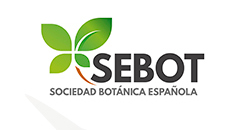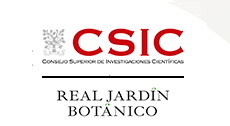Scientific Area
ETHNOBOTANICS IN THE CHURUTE-GUAYAS MANGROVES ECOLOGICAL RESERVE, AS A CONTRIBUTION TO THE CONSERVATION OF PHYTODIVERSITY
ID: 613 / 247
Category: Abstract
Track: Pending
Proposed Symposium Title: ETHNOBOTANICS IN THE CHURUTE-GUAYAS MANGROVES ECOLOGICAL RESERVE, AS A CONTRIBUTION TO THE CONSERVATION OF PHYTODIVERSITY
Authors:
Sirli Leython Chacón 1 , Antonio Caicedo 2
Affiliations: 1 Facultad de Ciencias Agropecuarias, Herbario Misael Acosta Solís (AMAS), Universidad Técnica de Ambato, Ecuador 2 Profesional de ejercicio libre de profesión, Ecuador
Abstract:
La Reserva Ecológica Manglar de Churute (REMCH) fue la primera área protegida de manglares de la costa ecuatoriana (1979), y con la mayor superficie a nivel nacional con 49,389 hectáreas. Es un ecosistema sensible a la intervención antrópica, sin embargo, a pesar de su importancia para la conservación, se han realizado pocas investigaciones etnobotánicas sobre las comunidades asentadas allí. Por ello, este estudio se centró en documentar las formas de uso de especies de importancia etnobotánica y con ello establecer una lista de categorías e interacciones que permitan establecer estrategias de conservación para las especies más vulnerables. Se aplicaron técnicas de investigación participativa, encuestas y entrevistas con informantes clave, observaciones participantes y colecciones etnobotánicas. Los datos fueron analizados con pruebas estadísticas de abundancia y diversidad, y se considerarán un índice de similitud de especies en función de sus usos. Se registraron 147 especies de plantas mencionadas por los informantes, correspondientes a 63 familias botánicas, siendo Leguminosae la más diversa con 13 especies. Las especies útiles con mayor número de registros fueron zaragoza ( Aristolochia odoratissima ), beldaco ( Pseudobombax millei ), guanábana ( Annona muricata ), tres filos ( Bacharis genistelloides ), guayacán ( Handroanthus chrysanthus ) y fernán sánchez ( Trialis cumingiana ). Los usos más importantes fueron medicinales, alimentarios y ornamentales, utilizándose principalmente hojas (34%), tallos (27%), frutos (23%) y flores (7%), preparados en diversas formas como infusión, alimentos, bebidas, cocina. y condimentos. El tipo de vegetación cultivada concentra el mayor número de especies de uso etnobotánico en la reserva, seguida por el matorral y el bosque seco. Se documentaron los usos de la fitodiversidad a las familias de la reserva, cuya forma de conservación y manejo dependen del contexto familiar, con principal influencia y apoyo en sus conocimientos tradicionales.




